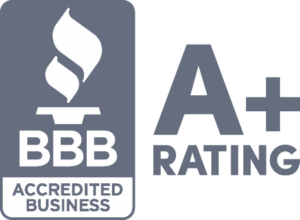› Business Loans › ERTC Advance
Get an ERC Loan Advance on Your Employee Retention Tax Credit Payment
Get started on your ERC Advance here:

Apply In Minutes

Gather Documents

Complete Application

Get Funded
Intro To Employee Retention Tax Credit
TL;DR (Too Long; Didn’t Read) summary for ERC advance guide:
- 💵 The Employee Retention Tax Credit (ERTC) offers eligible businesses up to $26,000 per employee for wages paid in 2020 and 2021.
- ⏳ Due to IRS processing delays, receiving ERTC refunds can take 6-12+ months.
- 🚀 United Capital Source provides ERTC advance loans, enabling businesses to access funds within 1-2 weeks instead of waiting for the IRS.
- ✅ To qualify for an ERTC advance, businesses must have full-time W2 employees and a verifiable ERTC refund.
- 🏦 The IRS no longer offers advance payments for expected tax credits; private lenders now fill this gap.
- 📄 Applying for an ERTC advance involves submitting an online application, gathering necessary documents, and completing the process with guidance from United Capital Source.
To learn more about how to get an ERC advance, please continue reading:
The Employee Retention Credit provides qualified employers with up to $26,000 per employee in tax refunds for the tax years 2020 and 2021. This COVID-19 employee retention credit is available for businesses that had to shut down or experience significant decline during the pandemic.
However, the Internal Revenue Service currently takes anywhere from 6-12+ months to issue the refund and recently stopped advance payment last year. But you don’t have to wait for the government because you can get an advance payment on ERC tax credits through United Capital Source.
Previous IRS guidance has clarified the treatment of wages for majority owners and their spouses in the context of the Employee Retention Tax Credit (ERTC).
We can help you access your money sooner with an ERC tax credit advance payment on the expected credit! This guide covers everything you need to know about Employee Retention Credit advance payments, including how to file for the credit and apply for an advance to receive your money sooner.
Specifically, we'll answer these questions and more:
What is the Employee Retention Tax Credit?
The Employee Retention Credit (ERC) is a refundable tax credit that incentivized companies to retain employees during the COVID-19 pandemic. The Coronavirus Aid, Relief, and Economic Securing Act (CARES) Act established the ERC.
Eligible employers include those that received state or federal government orders for a full or partial shutdown or experienced a 50% or more decline in gross receipts compared to the same timeframe in 2019.
Under the provision, eligible businesses could claim a payroll tax refund for qualified wages they paid during the pandemic. Since its initial implementation under the CARES Act, the provision has undergone several changes and adjustments. New legislation changed eligibility, allowing businesses that received PPP loans to also qualify in certain situations.
In 2020, the credit was equal to 50% of up to $10,000 in wages paid per employee for all qualifying quarters between March 13, 2020, and the end of the year. A qualifying quarter is when there was a decline in gross receipts by 50% or greater during the same quarter in 2019. Total credits could not exceed $10,000 per employee annually.
The IRS applied the credit to the employer portion of the employee’s social security tax, which was fully refundable. New laws also allow for claiming nonrefundable components of the ERC against Medicare taxes for wages paid after a specific date. The credit served as an overpayment and was refunded after subtracting the employer’s share of those taxes.
The credit equaled 70% of up to $10,000 in qualifying wages per quarter in the first three quarters of 2021. Essentially, employers could claim up to $7,000 per employee per quarter, which equals a total of $21,000 per employee annually. Paid qualified wages are crucial for claiming the credit, as they determine the eligible payroll for the ERC benefits.
Who is eligible for an Employee Retention Credit?
The qualifications for an eligible employer depend on the payroll period. Employers utilizing a certified professional employer organization (CPEO) should be aware of the responsibilities and processes involved, including the reconciliation of information for tax credits and the role of CPEOs in submitting claims. Review the following ERC program criteria. The deadline to claim the ERC for 2020 tax periods is April 15, 2024.
Qualifying Businesses March 13, 2020, to December 31, 2020
To qualify for wages between March 13 and December 21, 2020, your business must have carried on trade or have been a tax-exempt organization.
If your business was ordered to partially or fully shut down by a government authority or experienced a decline of 50% or more in receipts for the corresponding quarter in 2019 due to a COVID-19-related decline, you could qualify.
Qualifying Businesses January 1, 2021, to September 30, 2021
Businesses applying for the ERC between January 1, 2021, and September 30, 2021, must meet one of two conditions.
Condition 1: An appropriate government authority ordered a full or partial shutdown of business operations.
Condition 2: Experienced a decline of 20% in gross receipts for the corresponding quarter in 2019 due to Covid-related decline.
Qualifying Businesses October 1, 2021, to December 31, 2021
Most businesses do not qualify for the ERC on wages during Q4 2021. The sole exception applies to recovery startup businesses.
The IIJA amended section 3134 of the Internal Revenue Code to exclude all businesses except recovery startups as defined in section 3134(c)(5).
If you reduced employment tax deposits for Q4 2021 wages on or before December 20, 2021, consult with your tax professional to see if you are exempt from the “failure to deposit” penalty.
How does advance payment for ERC work?
Several lenders provide ERC loan advance payments so businesses can access their funds sooner. ERC advance loans offer up to 90% of anticipated ERC refunds. As a business owner, you essentially sign over your rights to the ERC in exchange for the advance.
When the IRS issues the ERC refund check, it goes to the lender to repay the advance. Some lenders will charge a small monthly interest rate until the check is received, while others might charge a one-time fee.
Ensure you fully understand the advance payment policy before signing over ownership of the credit. Remember that this is not a loan. You may see some providers call it an “ERC bridge loan” or “ERC Advance Loan,” but it is not a loan in the traditional sense. ERC advance funding is a program where you receive the funds for ERC claims sooner in exchange for a fee. ERC advance loans can be processed quickly, often within days. Companies offering ERC advance loans are often unregulated entities.
What are the qualifications for an ERTC advance?
Full-time W2 employees
A verifiable ERC refund
How to apply for an ERTC advance payment:
Follow these steps to request an advance on your approved ERTC through United Capital Source.
Step 1: File for your ERC with the IRS
If you haven’t done so, the first step is filing for your ERC. You can file independently, or our dedicated ERTC experts can help you complete the filing process and get the maximum credit possible.
Step 2: Gather your documents
You’ll need the following documents when you request an ERC advance payment:
- A completed application.
- IRS Form 8821 & 7216.
- IRS Form 941 (original) and 941x (amended) for each quarter filed.
- ERC calculations.
- Documentation for ERC qualification from the filer.
- 941s for the two most recent quarters.
- Government ID for all business owners with a 20% stake or greater.
- Most recent business tax return.
- Bank statements for the previous 3 months.
You will also need to provide the following after approval, but before funding:
- W-9 by the authorized signer(s).
- Copy of your operating agreement.
- Voided check from your business bank account.
Step 3: Complete the application
You can download the application form or visit the application page to complete the process.
Step 4: Consult with an ERC Loan expert
One of our funding experts will reach out to discuss your advance payment application. The call will cover the refund amount, the timeline for receiving your advance, and any associated costs.
Step 5: Accept and get your funds
Once we finalize the application process, you can expect to receive your funds according to the discussed timeline. Repayment occurs when we receive the ERC refund check from the IRS.
What are the pros & cons of an ERC loan advance?
Here are the benefits and drawbacks of an ERC loan advance.
PROS
CONS
Frequently Asked Questions
Here are the most common questions about ERC loan advances.
What are the benefits of the Employee Retention Credit?
The ERC reduces the amount of wage expense that can be reported on an employer’s income tax return. The Employee Retention Credit (ERC) offers several benefits to eligible businesses and tax-exempt organizations. Some of the key benefits include:
- Refundable Tax Credit: The ERC is a refundable tax credit, meaning that if the credit exceeds the tax liability, the excess amount can be refunded. This can provide a significant financial boost to businesses.
- Reduced Payroll Taxes: The ERC can be claimed against payroll taxes, reducing the amount of taxes owed. This reduction can help businesses manage their payroll costs more effectively.
- Increased Cash Flow: By claiming the ERC, businesses can increase their cash flow. This additional cash can be used to cover operational expenses, invest in growth initiatives, or pay off debts, providing much-needed financial flexibility.
- Support for Recovery Startup Businesses: The ERC provides support for recovery startup businesses, which are defined as businesses that began operations after February 15, 2020, and have average annual gross receipts of $1 million or less. This support can be crucial for new businesses trying to establish themselves during challenging times.
- Flexibility in Claiming the Credit: The ERC can be claimed on a quarterly basis, allowing businesses to adjust their claims as needed. This flexibility ensures that businesses can maximize their benefits based on their specific financial situations.
Does the IRS offer advance payment for an expected tax credit?
The IRS allowed certain advance payments during the COVID-19 pandemic using Form 7200. However, it stopped accepting Form 7200 after January 31, 2022.
Since businesses could no longer receive advance payments from the IRS, private lenders and some hedge funds began offering advances for employer credits. They filled the gap with an Employee Retention Credit advance payment.
The advance fee structures for hedge funds are currently higher than fees from direct lenders.
What wages qualify for Employee Retention Credits?
Employers in U.S. territories can claim the ERC if they meet other eligibility requirements. Qualifying wages depend on the average number of employees in 2019.
Qualifying Wages 2020
If a business averaged under 100 employees during 2019, it could claim the ERC for all employees, whether working or not. Suppose a business averaged over 100 employees in 2019. The deadline to claim the ERC for 2020 tax periods is April 15, 2024.
In that case, it could only claim wages for employees who didn’t work or provide services (i.e., on furlough or some other form of suspension from work duties.)
Qualifying Wages 2021
Businesses that averaged 500 or more employees in 2019 could only claim the ERC for qualified wages paid to employees who didn’t work during the qualifying period.
If a business averaged fewer than 500 employees in 2019, it could claim the ERC for all employees, whether working or not.
Recovery Startup Businesses can claim the ERC only for the third and fourth quarters of 2021.
How does the ERC interact with other Credit and funding sources?
The ERC interacts with other credits and funding sources in several ways:
- Paycheck Protection Program (PPP): The ERC can be claimed in conjunction with the PPP, but the same wages cannot be used for both programs. Businesses must carefully allocate wages to ensure compliance with both sets of rules.
- Shuttered Venue Operators Grant (SVOG): The ERC cannot be claimed on wages used to justify the SVOG. Businesses must ensure that they do not double-dip on these benefits.
- Restaurant Revitalization Fund (RRF): Similar to the SVOG, the ERC cannot be claimed on wages used to justify the RRF. Proper documentation and allocation of wages are essential to avoid issues.
- Other Tax Credits: The ERC can be claimed in conjunction with other tax credits, such as the Work Opportunity Tax Credit (WOTC) and the Research and Development (R&D) Tax Credit. Businesses should consult with their tax professionals to optimize their overall tax strategy.
Why does it take so long to receive an IRS ERC?
Employee Retention Tax Credits are sometimes called “America’s best-kept secret.” That’s because Paycheck Protection Program (PPP) loans got most of the attention from business owners. The IRS projects that processing times for ERC claims will vary depending on the complexity of the claim.
ERTC was the lesser-known option. Per the National Federation of Independent Business (NFIB), only 4% of small business owners are familiar with the refundable tax credit.
However, now that PPP loans have expired and recent legislation allows businesses that received PPP loans to also file for ERTC, more companies are applying for the credit. As a result, the IRS has a backlog of requests, which has prolonged the turnaround time.
Any filing errors can also cause delays. For example, if you forgot to deduct PPP loan forgiveness, it can take over 12 months to correct the filing and receive your money.
2025 Update: After a long pause on processing claims filed, the IRS plans to resume payments on older, low-risk Employee Retention Tax Credit claims.
How do I file for an ERC?
Businesses can apply for the ERC claim on wages during the active period (March 13, 2020-September 30, 2020, for most companies). You can consult your accountant or tax pro on how to complete forms 941 and 941x, or we can help you file for the ERTC with a free consultation.
How do I find out how much I can receive for an ERC?
The first step is determining which wages qualify and which don’t. You can use the qualifications above to see. We’re going to use a simple example to show how it works.
Let’s say you ran a retail store, and your gross receipts declined by 80% in Q1 2021 compared to Q1 2019. Your business employs 20 people, so you’re well under the 500-employee threshold.
You can claim 70% of wages up to $10,000 for the quarter. Assuming all 20 employees earned wages equal to or greater than $10,000, you can claim $7,000 per employee, which works out to $140,000 for the quarter. If the pattern held for the first three quarters of 2021, your total credit would be $420,000 for the year.
The actual amount you receive will vary depending on how much business you did in 2020 and 2021 compared to the same calendar periods in 2019, the average number of employees, and whether or not you received PPP loans and PPP forgiveness.
When does the ERC expire?
The Employee Retention Tax Credit expired on September 30, 2021. For a recovery startup business, the credit expired on December 31, 2021.
While the ERC is no longer in effect, employers can still claim the credit for wages paid during the active period. Businesses can file Form 941-X up to three years after filing or two years after paying, whichever is later.
What are the Common Mistakes to Avoid with an ERC Claim?
When claiming the ERC, businesses should avoid the following common mistakes:
- Incorrectly Calculating Qualified Wages: Businesses should ensure that they correctly calculate qualified wages, which include wages paid to employees who were not providing services due to a suspension of operations or a decline in gross receipts. Accurate calculations are crucial for maximizing the credit.
- Failing to Maintain Proper Documentation: Proper documentation is essential for substantiating ERC claims. Businesses should maintain records of qualified wages, payroll taxes, and gross receipts to support their claims and avoid potential issues during audits.
- Not Claiming the Credit on a Quarterly Basis: Businesses should claim the ERC on a quarterly basis to ensure that they receive the maximum credit amount. Regularly reviewing and adjusting claims can help businesses stay compliant and optimize their benefits.
- Not Considering the Interaction with Other Credits and Funding Sources: Businesses should consider the interaction between the ERC and other credits and funding sources to ensure that they are maximizing their benefits. Understanding the rules and limitations of each program can help businesses make informed decisions and avoid potential pitfalls.
By being aware of these common mistakes and taking proactive steps to avoid them, businesses can ensure that they fully benefit from the Employee Retention Credit. ERC advance loans carry high costs, which can include a significant discount on the refund amount.
ERTC Advance - Final Thoughts
If you remained in business during the Covid-19 pandemic and retained employees, you could qualify for an ERC tax credit. But getting the money could take months or even a year.
With an ERC loan advance, you can access that money much sooner than waiting for the government. Fortunately, our ERTC experts can help you file for an ERC credit and request an ERC advance payment.
Our experts can help you get your money.
Contact us today whether you need to file or have already filed and want an advance.






